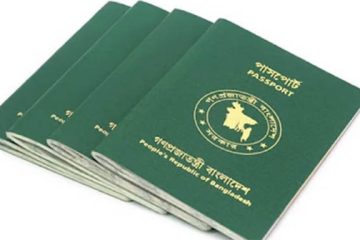Climate change badly affecting harvest, making it difficult to feed rising population
A rising population amid declining agricultural land has put the country’s future food security at risk, especially when salinity in the coastal belt, and droughts and depleting underground water level in the north have become constant realities.
According to a projection of the Bangladesh Bureau of Statistics (BBS), the country’s population will be 16.69 crore by 2020, while unofficial estimates suggest that the current population is already approaching 16 crore. The National Population Council of Bangladesh says the number will reach 17 crore by 2020.
Bangladesh had to import nearly 20 lakh tonnes of food grains in the last fiscal year on top of around 3 crore tonnes of rice and wheat produced domestically, while BBS’s projected food security requirement was for 2.49 crore tonnes.
Economists and agriculturists told The Daily Star yesterday, on the eve of World Food Day, that these disparities suggest either the population is increasing more than the projected rate, or food consumption patterns are changing.
Bangladesh currently has 84.4 lakh hectares of cultivable land, according to the Ministry of Agriculture. With 1 percent decrease of arable land due to building of new houses, industrialisation, and urbanisation — the cultivable land area will come down to a little more than 70 lakh hectares in 2020.
“Though presently the situation of food security appears quite satisfactory, its future does not look the same. There are two major factors — increasing population and climatic changes,” said Prof Quazi Kholiquzzaman Ahmad, a noted economist.
These factors could lead to a decrease in productivity as was projected by the Inter-governmental Panel on Climate Change (IPCC), said Prof Kholiquzzaman, a member of the panel.
Major reasons behind such projections are salinity intrusion in the southern coastal belt, and erratic rainfall and underground water level depletion in the north, which are very much evident now, he said.
Measures the country now need to take, to adapt to the changes, include invention of new varieties of crops or technologies, said the economist, who is also the chairman of Bangladesh Unnayan Parishad.
Dr Khairul Bashar, a scientist at Bangladesh Rice Research Institute (BRRI), said due to salinity, it is not possible to grow rice during the boro season on nearly 10 lakh hectares of land in the southern coastal region. And the intrusion of salinity is gradually increasing, he said.
Though two saline tolerant rice varieties — BINA Dhan-8 and BRRI-47 — have been developed, their extension to farmers is taking time, he added.
Moreover, when there is less rain in the monsoon, the salinity increases to levels that these varieties cannot tolerate, and seize to grow, Bashar noted.
Dr Abdul Mazid, hub manager of Cereal System Initiative for South Asia (CISA) in Dinajpur, said International Rice Research Institute (IRRI), and BRRI are now trying to develop a variety which will be tolerant of both tidal surges and salinity.
In the north, the major problem is water shortage, he said adding that the underground water level drops so much during March-April, when boro rice grows, that the production cost shoots very high due to irrigation needs.
“Sometimes the shortage of water even damages the crop,” he said adding that too much extraction of ground water through tubewells causes the water level to drop so low, and the aquifers are not adequately recharged during the rainy season.
As sometimes there are droughts even in the monsoon lately, the scientists have developed short duration rice varieties — BINA-7, BRRI-33, and BRRI-49 — which could also be sown in high lands having moisture. These can grow with late rain, he said, “We are trying to extend those to farmers fast.” Around 35 percent of the total land in the country is high, where these varieties could be grown.
Scientists say with the declining agricultural land, the government must opt for increasing crop yield.
Abdul Mazid said presently on an average per hectare rice yield in Bangladesh is 4 tonnes, which could easily be increased to 5.5 tonnes.
“This needs better agronomical management,” he said adding that good seeds, timely planting, and proper inputs are crucial for this. Training of farmers and agricultural extension officials are imperative, he added.
To address the depletion of underground water — preservation and use of surface water, and implementation of alternative water and dry (AWD) method in agriculture is very important, he noted. AWD reduces water wastage, but helps increase yield, he said.
Farmers using the method do not to keep rice fields submerged by water all the time. Fifteen days after boro plantation, fields are kept dry intermittently, but that does not create any scarcity of water for the crop.
Annual wheat production has also declined to 10 lakh tonnes from nearly 20 lakh tonnes just a decade ago. Maize production however has increased, but the population of the country do not consume much maize, though it is very nutritious.
Abdul Mazid said in char lands, more maize and sweet potato could be grown during winter, which could supplement wheat.
“Otherwise, it will be difficult to ensure food security for the ever increasing population,” he cautioned.




















